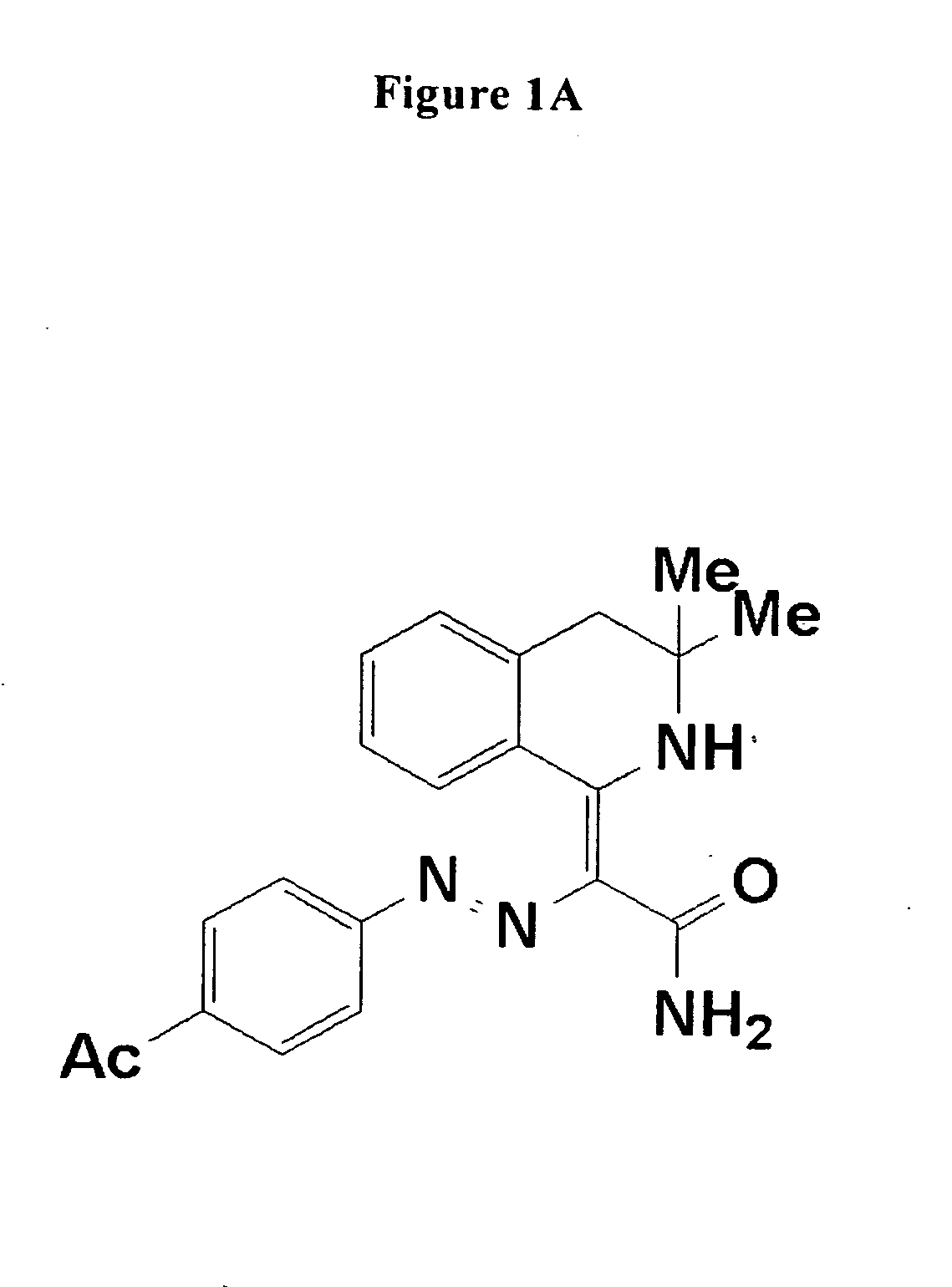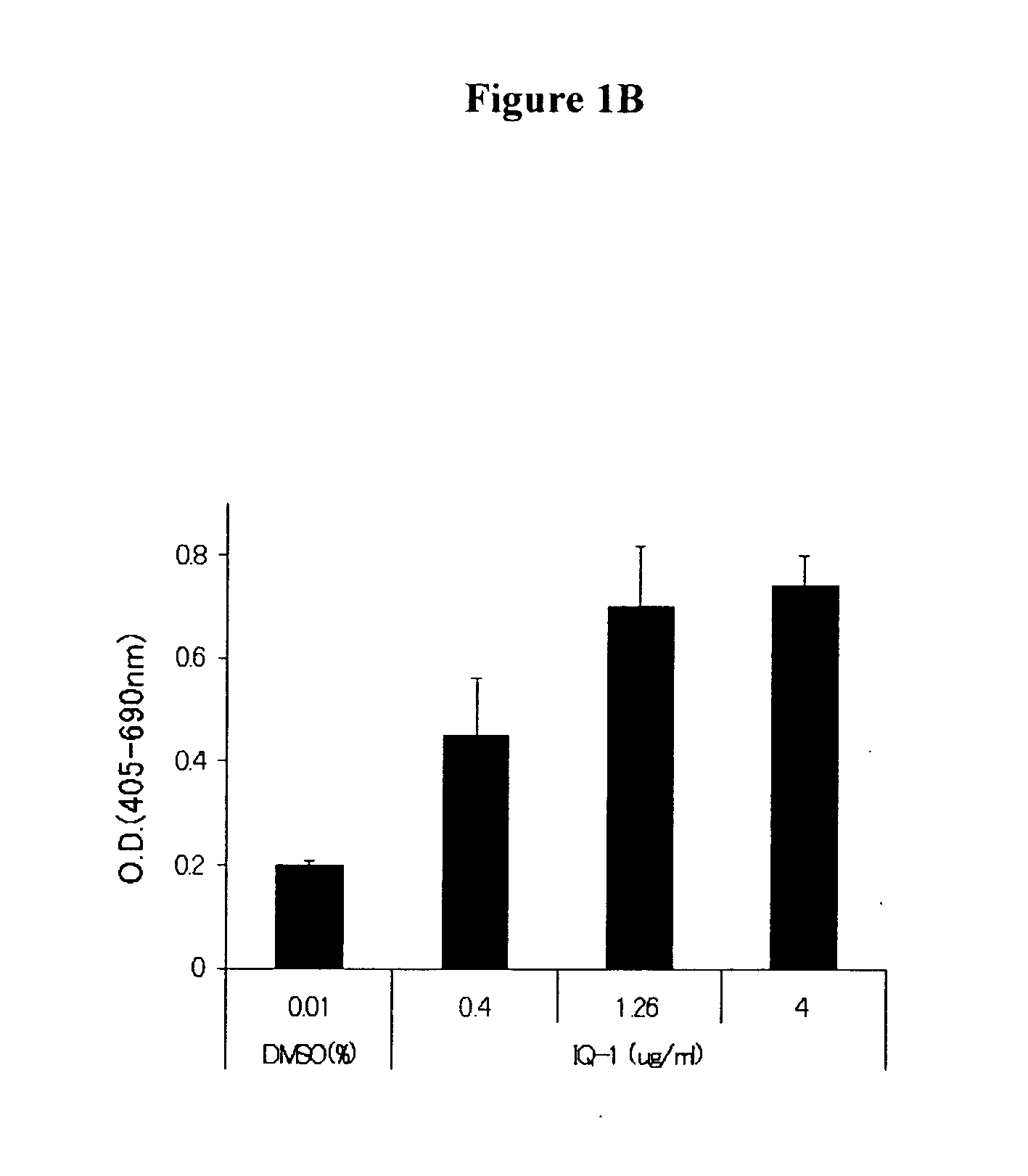Serum-free expansion of cells in culture
- Summary
- Abstract
- Description
- Claims
- Application Information
AI Technical Summary
Benefits of technology
Problems solved by technology
Method used
Image
Examples
example 1
PR72 / 130 and ES Cell Proliferation
[0277] The small molecule IQ-1 (Asahi Kasei Pharma, FIG. 1) selectively increased β-catenin's usage of CBP as a coactivator at the expense of the use of p300, thereby maintaining the embryonic (ES) cells in an undifferentiated state. The combination of Wnt3a and IQ-1 allowed for proliferation and maintenance of pluripotency as judged by the expression of Oct4, Nanog and Rex1, whereas IQ-1 alone was not sufficient to cause proliferation and maintain pluripotency of ES cells.
[0278] The present example relates to the identification of the molecular target of IQ-1. To identify the molecular target of IQ-1, whole cell lysates from P19 embryonic carcinoma cells were treated with biotinylated IQ-1. Compared to a control biotinylated compound (FIG. 3A, lane 2), biotinylated IQ-1 selectively bound three proteins (FIG. 3A, lane 3). The two bands at 72 and 130 kDa were identified by mass spectral sequencing as the differentially spliced regulatory subunits P...
example 2
IQ-1 Maintained the Undifferentiated State of ESCs
[0280] Murine ESCs (D3 ES) were screened with a chemical library (Asahi Kasei) to identify compounds that enhanced Alkaline Phosphatase (AP) production, a marker of undifferentiated ESCs (12). From this screen, IQ-1 (MW=362.42, FIG. 1A) was identified, which dose dependently increased AP activity (FIG. 1B), in media containing 15% FCS without the addition of exogenous leukemia inhibitory factor (LIF). Treatment with IQ-1 resulted in enhanced expression of the undifferentiated ESC marker, Stage Specific Embryonic Antigen 1 (SSEA-1) in a dose dependent fashion (FIG. 1C).
[0281] IQ-1 allowed for long term expansion of ESCs in culture without MEFs and without the addition of exogenous LIF. Mouse D3 ESCs were cultured in media containing 15% FCS plus 4 μg / ml IQ-1 for 65 days. The ESCs continued to proliferate at a steady rate with an approximate 2 log increase every ten days (FIG. 1D).
example 3
IQ-1 Maintained Murine ESC Self-Renewal Independently of LIF
[0282] The cytokine LIF, by activating the Stat3 signal transduction pathway, maintains murine ESC symmetrical self-renewal and blocks differentiation (13, 14, 15). LIF did not maintain human ESC self-renewal (16, 17). Nanog is a divergent homeoprotein pluripotency sustaining factor for ESCs (18, 19). Nanog has been shown to act in parallel with LIF-driven stimulation of Stat3 to drive ESC self-renewal. Additionally, elevated expression of Nanog is sufficient for clonal expansion of ESCs and maintenance of expression of the key stem cell transcription factor Oct4, in the absence of Stat3 activation (19).
[0283] To further investigate the mechanism of action of IQ-1, the effects of IQ-1 on Nanog expression were determined. Whereas feeder-free ESCs treated with LIF only slightly increased Nanog levels, IQ-1 significantly increased and maintained Nanog expression in culture as judged by real time RT-PCR (FIG. 2A). Removal of ...
PUM
 Login to View More
Login to View More Abstract
Description
Claims
Application Information
 Login to View More
Login to View More - R&D
- Intellectual Property
- Life Sciences
- Materials
- Tech Scout
- Unparalleled Data Quality
- Higher Quality Content
- 60% Fewer Hallucinations
Browse by: Latest US Patents, China's latest patents, Technical Efficacy Thesaurus, Application Domain, Technology Topic, Popular Technical Reports.
© 2025 PatSnap. All rights reserved.Legal|Privacy policy|Modern Slavery Act Transparency Statement|Sitemap|About US| Contact US: help@patsnap.com



